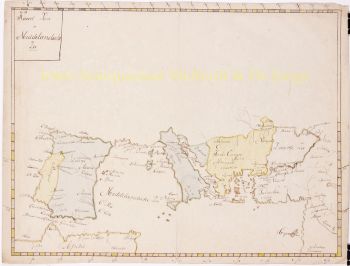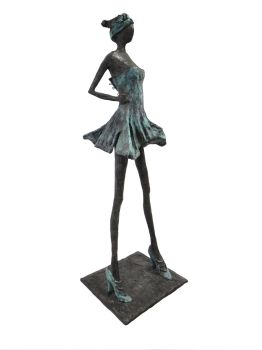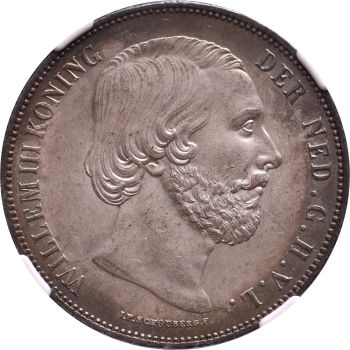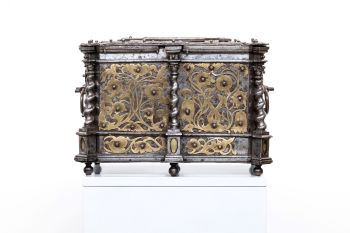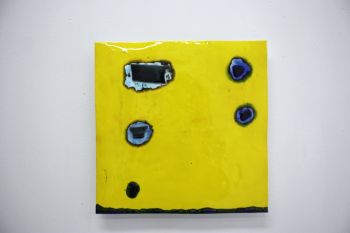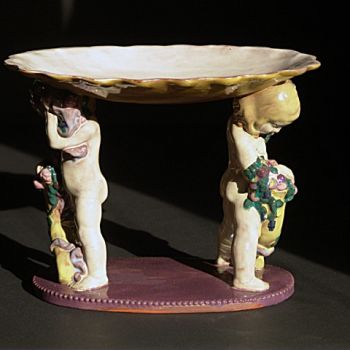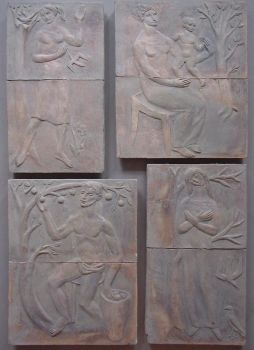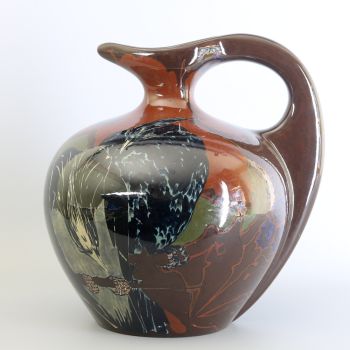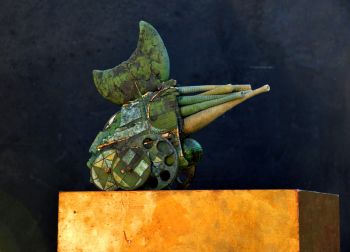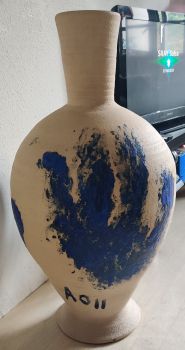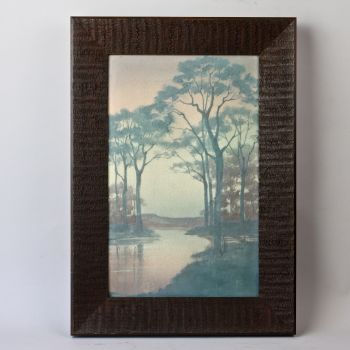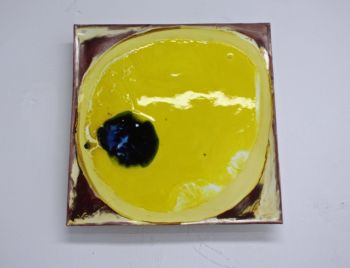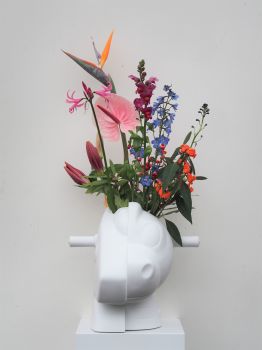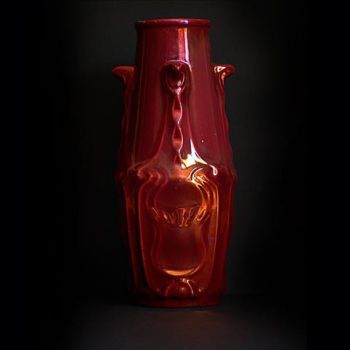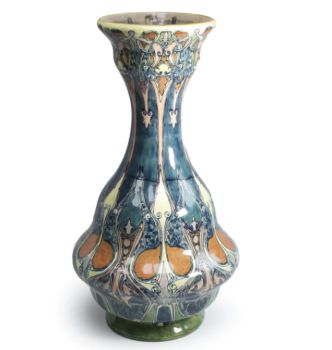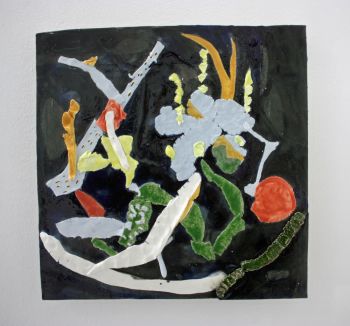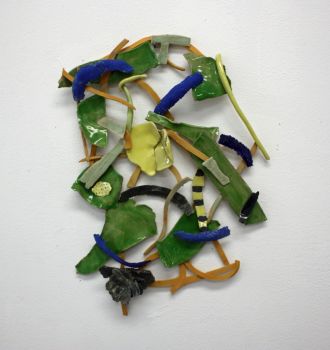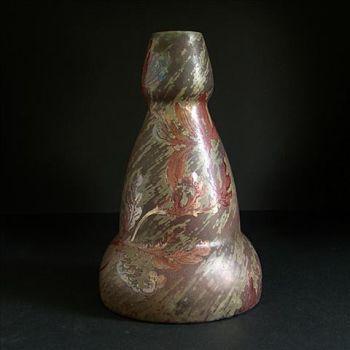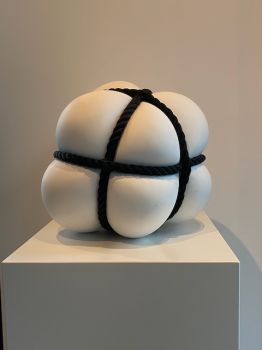Chinese porcelain monochrome turquoise crackled vase, Kangxi period (1661-1722), Qing Dynasty 1661 - 1722
Artista Sconosciuto
PorcellanaPorcellana cinese
13.50 cm, ø 7 cm
ConditionVery good
Prezzo su richiesta
Menken Works of Art
- A proposito di opere d'arteA Chinese porcelain monochrome turquoise vase.
China, Kangxi period (1661-1722).
The vase of baluster form with a rounded belly, the elongated cylindrical neck with a flaring rim, covered in an attractive crackled turquoise glaze, stopping just above the footrim
About turquoise glaze:
Turquoise glaze owes its color to copper oxide in an alkaline glaze mixture. It has a long history in Chinese ceramics, dating back at least to the Tang dynasty. Interest in turquoise glaze was also present among Middle Eastern potters, though their methods to achieve similar results differed. The technology varied depending on the material the glaze was applied to.
One of the curiosities of the Chinese potters' techniques was their use of saltpeter, a soluble material, often unfitted. The saltpeter was mixed with quartz and water (and sometimes with lead oxides or carbonates) to create low-temperature glazes.
After analyzing a late 19th-century raw turquoise glaze used at Jingdezhen, the renowned French ceramic chemist Georges Vogt wrote in 1900:
'The simplicity with which the Chinese prepare this turquoise ... is truly remarkable. Nothing in its composition needs to be melted, or to be fitted. The only preparation needed is to grind together the saltpeter, the quartz and the copper powder in suitable proportions and it is ready to be used on porcelain vases.'
Ref:
A vase of similar shape is in the Metropolitan Museum of Art collection, accession number: 79.2.93
Dimensions:
Height 13.5 cm, diameter 7 cm.
Condition:
A small chip to the foot rim, furthermore in perfect condition.
Inv. No: MW66 - A proposito di opere artista
Può succedere che un artista o un creatore sia sconosciuto.
Alcune opere non sono determinate da chi sono state realizzate o sono state realizzate da (un gruppo di) artigiani. Esempi sono statue dell'antichità, mobili, specchi o firme non chiare o leggibili ma anche alcune opere non sono affatto firmate.
Inoltre puoi trovare la seguente descrizione:
•"Attribuito a …." A loro avviso probabilmente opera dell'artista, almeno in parte
•“Studio di ….” o “Officina di” A loro avviso un'opera eseguita nello studio o nella bottega dell'artista, eventualmente sotto la sua supervisione
•“Cerchio di…” A loro avviso un'opera del periodo dell'artista che mostra la sua influenza, strettamente legata all'artista ma non necessariamente al suo allievo
•"Stile di..." o "Seguace di..." A loro avviso un'opera eseguita nello stile dell'artista ma non necessariamente da un allievo; può essere contemporaneo o quasi contemporaneo
•“Modalità di…” A loro avviso un'opera nello stile dell'artista ma di epoca successiva
•"Dopo …." A loro avviso una copia (di qualsiasi data) di un'opera dell'artista
•“Firmato…”, “Datato…” o “Iscritto” A loro avviso l'opera è stata firmata/datata/inscritta dall'artista. L'aggiunta di un punto interrogativo indica un elemento di dubbio
•"Con firma....", "Con data...", "Con iscrizione..." o “Riporta firma/data/iscrizione” a loro avviso la firma/data/iscrizione è stata aggiunta da qualcuno diverso dall'artista
Sei interessato ad acquistare questa opera d'arte?
Artwork details
Related artworks
- 1 - 4 / 12
- 1 - 4 / 24
Artista Sconosciuto
Series of 6 Chinese cups and saucers (Yongzheng period)1722 - 1735
Prezzo su richiestaKuipers Kunst & Antiek
Artista Sconosciuto
A blue and white Romance of the Three Kingdoms charger, Kangxi period (1661-1722)1661 - 1722
Prezzo su richiestaMenken Works of Art
1 - 4 / 24Artista Sconosciuto
A white jade ‘Lotus Seedpod and Bug’ carving, Qing dynasty, 18th century18th century
Prezzo su richiestaMenken Works of Art
Artista Sconosciuto
Chinese carnelian agate vase or brush washer, 18th/19th century, Qing dynasty1720 - 1820
Prezzo su richiestaMenken Works of Art
Artista Sconosciuto
A blue and white Romance of the Three Kingdoms charger, Kangxi period (1661-1722)1661 - 1722
Prezzo su richiestaMenken Works of Art
Artista Sconosciuto
Chinese gilt bronze censer, Xuande mark, 18th century, Qing dynasty18th century
Prezzo su richiestaMenken Works of Art
Artista Sconosciuto
A Chinese porcelain blue and white 'Mantou Xin' bowl, Kangxi period (1661-1722)1700 - 1720
Prezzo su richiestaMenken Works of Art
Artista Sconosciuto
Two large Chinese carved wooden architectural wall panels, Qing dynasty, 19th century19th century
Prezzo su richiestaMenken Works of Art
1 - 4 / 11











